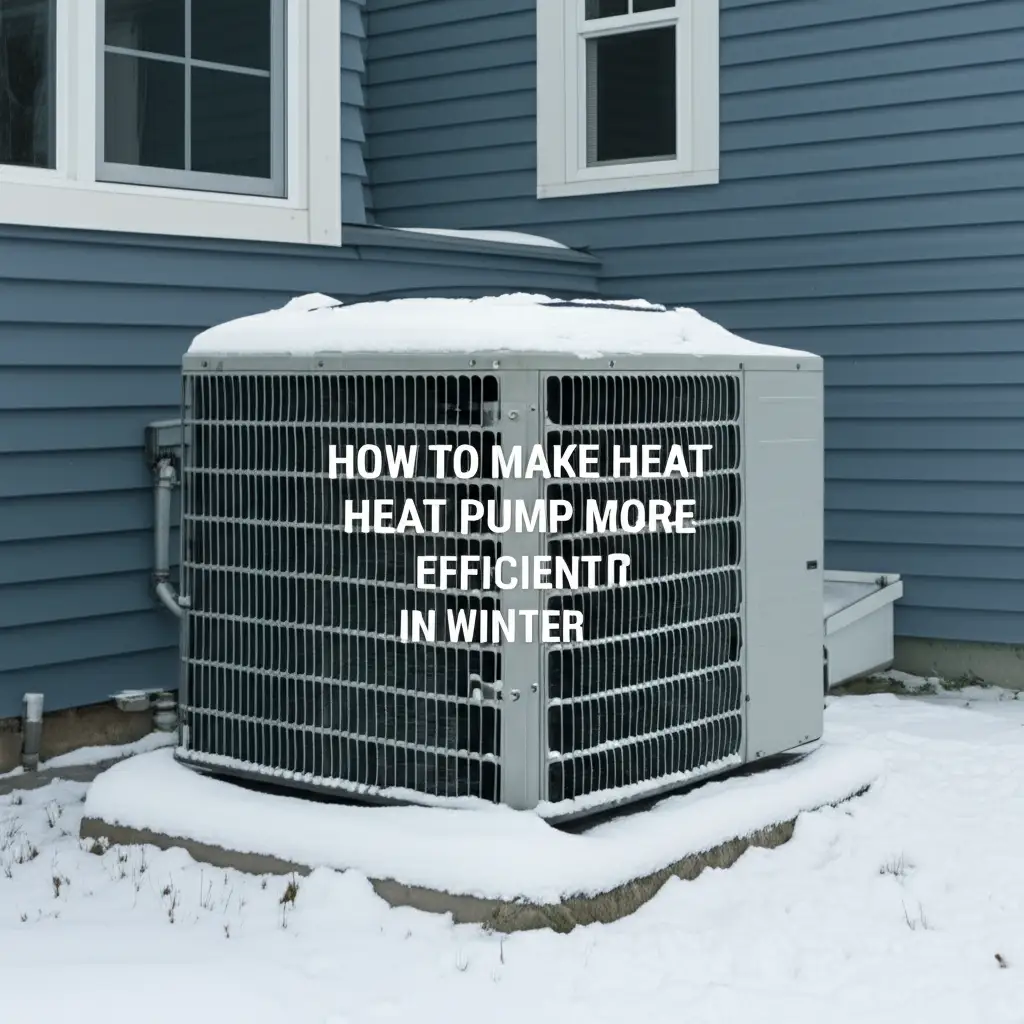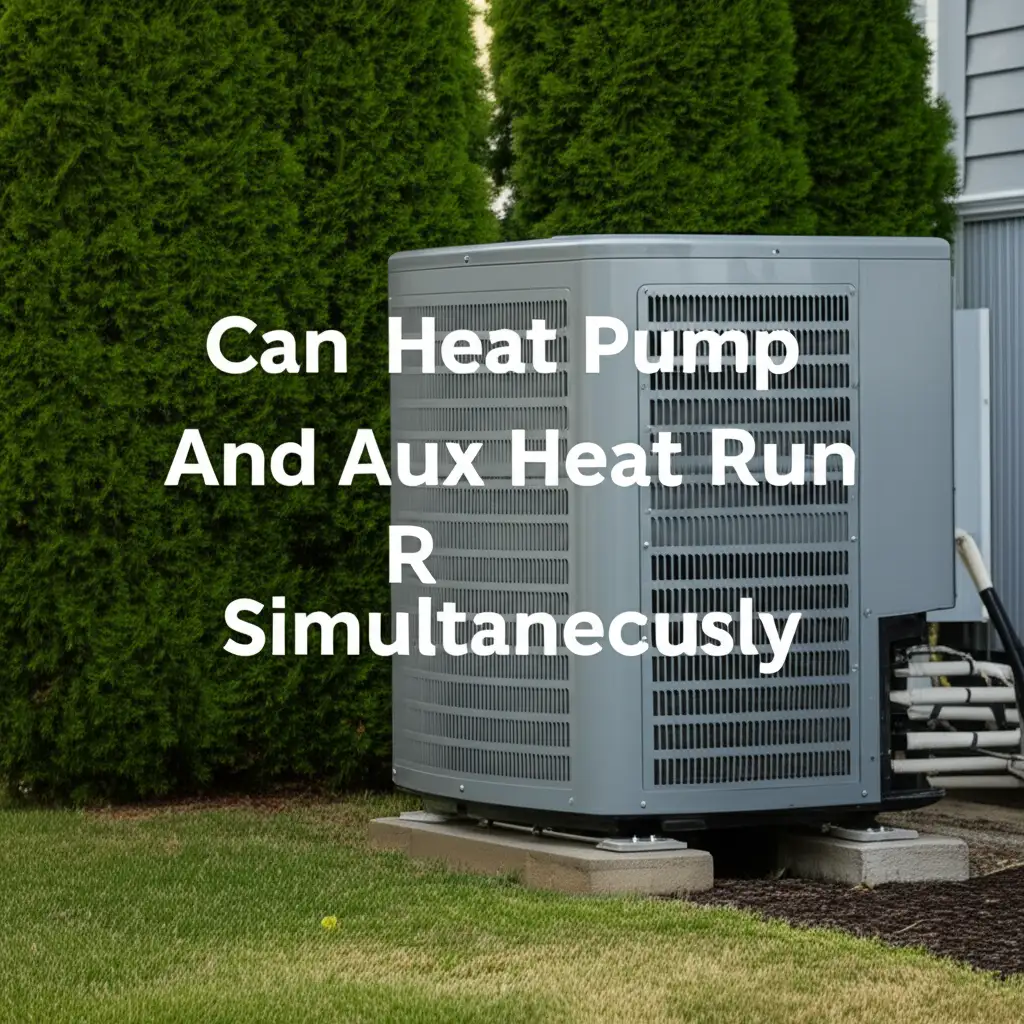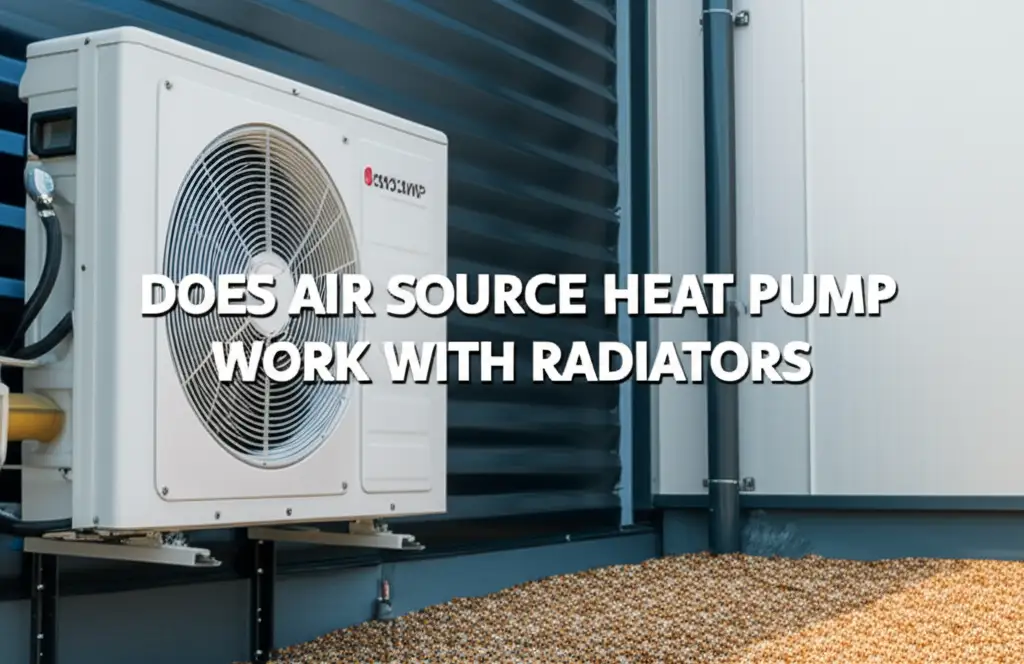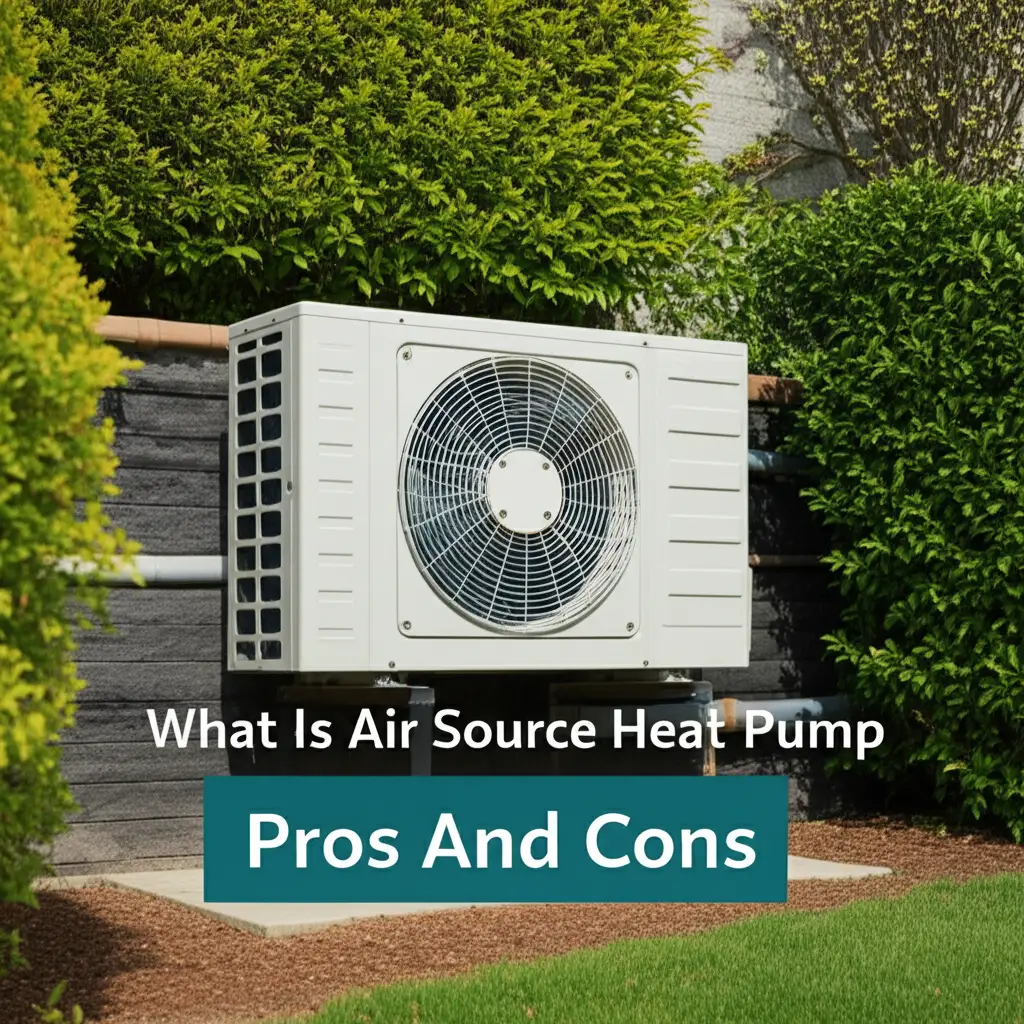· Katria Melrose · Home Heating & HVAC · 19 min read
How Much Is Air Source Heat Pump Cost
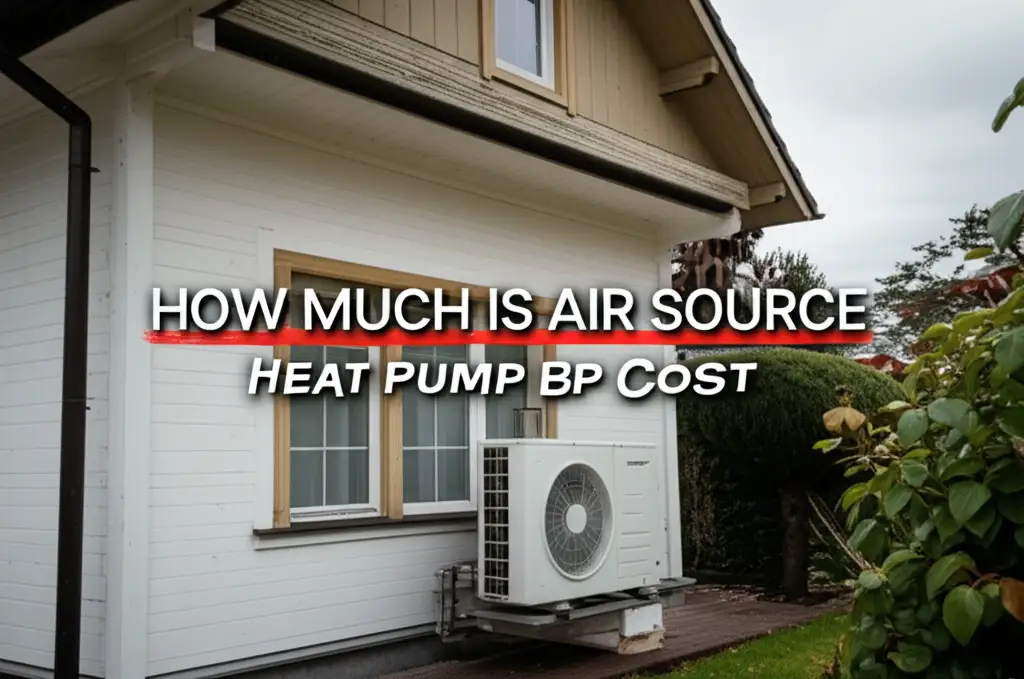
Understanding Your Air Source Heat Pump Cost
Considering a new heating system for your home? An air source heat pump stands as a popular choice. Many homeowners ask, “How much is air source heat pump cost?” It is an important question. The total cost involves more than just the purchase price of the unit.
You need to factor in installation, running costs, and maintenance. We will explore each aspect. This article guides you through the full financial picture. We will discuss grants, long-term savings, and what truly impacts your overall investment.
Takeaway
- Initial Investment Varies: Unit prices for an air source heat pump range from $3,000 to $10,000, depending on size and brand.
- Installation Adds Significant Cost: Professional installation can add $5,000 to $15,000 or more, influenced by system complexity and existing infrastructure.
- Running Costs are Efficient: Air source heat pumps generally offer lower running costs than traditional fossil fuel systems due to high efficiency.
- Grants Reduce Upfront Expense: Government and local incentives can significantly lower your initial financial burden.
- Long-Term Savings are Real: Expect lower energy bills and reduced carbon emissions over the lifespan of the unit.
How Much Is Air Source Heat Pump Cost?
The total air source heat pump cost typically ranges from $8,000 to $25,000. This figure includes the unit itself and professional installation. Specific costs vary widely based on your home’s size, the system’s complexity, and regional labor rates. Government grants and incentives can also reduce this initial expense significantly.
Breaking Down the Air Source Heat Pump Costs
Getting an air source heat pump involves several financial components. It is not just the price of the equipment. You must also consider the cost of installing it. Then, there are the ongoing expenses for running and maintaining the system.
Understanding these different parts helps you budget accurately. Each element plays a role in the total investment. Let’s look at what makes up these figures.
Initial Purchase Price: The Air Source Heat Pump Unit
The actual heat pump unit itself represents a major part of your investment. This cost varies greatly. Many factors determine the price of the unit. These include the brand, size, and efficiency rating of the heat pump.
High-efficiency models often cost more upfront. However, they can save you more on energy bills over time. Smaller units for compact homes will be less expensive. Larger units, needed for bigger houses, naturally come with a higher price tag. Reputable brands also tend to have higher prices but may offer better warranties and reliability.
- Unit Size: This is measured in BTUs (British Thermal Units) or tons. A larger home needs a higher BTU unit. Larger units cost more money. For example, a 2-ton unit for a small home might cost $3,000-$5,000. A 5-ton unit for a large home could be $7,000-$10,000 or more.
- Efficiency Rating (COP/HSPF): Higher Seasonal Performance Factor (HSPF) or Coefficient of Performance (COP) ratings mean the unit uses less electricity to produce heat. These units are usually more expensive to buy. They also save more on energy bills. It is a trade-off between upfront cost and long-term savings.
- Brand and Features: Well-known brands like Mitsubishi, Daikin, Carrier, or Lennox might have higher prices. They often include advanced features. These features could be smart thermostats or multi-zone capabilities. Basic models from lesser-known brands can be more affordable. They may offer fewer features.
- Type of System: Air-to-air heat pumps are common. They circulate air. Air-to-water heat pumps connect to radiators or underfloor heating. They might have a higher unit cost. They often require a hot water cylinder too.
When you choose a unit, think about your home’s needs. Consider your budget for both purchase and operation. It is a balance.
Installation Expenses: The True Cost of Air Source Heat Pump Setup
The cost to install an air source heat pump is often as much as, or even more than, the unit itself. This part of the budget needs careful planning. Several elements contribute to the installation price. These factors can make the cost go up or down.
Professional installation ensures the system works correctly and safely. It also ensures efficiency. Do-it-yourself installation is complex. Most manufacturers require professional installation for warranty validity. Find out how much does air source heat pump cost to install for a detailed breakdown.
- Labor Costs: This is a major factor. Installers charge for their time and expertise. Rates vary by region and company. A complex installation takes more hours. More hours mean higher labor costs.
- Ductwork or Radiator Modifications: If your home lacks existing ductwork or needs significant changes, this adds expense. Air-to-air systems need ducts. Air-to-water systems might need larger radiators. Older radiators might not be efficient with lower heat pump temperatures. You might need to assess if can you use an air source heat pump with radiators for your specific setup.
- Electrical Upgrades: Heat pumps need a dedicated electrical circuit. Older homes might need an electrical panel upgrade. This is a common extra cost. It ensures the heat pump gets enough power.
- Hot Water Cylinder: Air-to-water heat pumps usually require a new, larger hot water cylinder. This cylinder stores hot water for your home. It adds to the overall installation cost.
- Groundwork and Positioning: The outdoor unit needs a stable base. It also needs enough clearance for airflow. This might involve minor landscaping or concrete work. Access to the installation site can also affect labor time.
- Permits and Inspections: Local regulations often require permits for HVAC system installations. These permits come with fees. Inspections ensure the installation meets safety and building codes. These are necessary costs.
Getting multiple quotes from certified installers is important. This helps you compare prices and services. Make sure the quote includes all potential costs. Ask about any hidden fees.
Operating Costs: Understanding Your Air Source Heat Pump’s Running Bills
Once installed, your air source heat pump begins to save you money. The operating costs are primarily your electricity bill. Heat pumps are highly efficient. They transfer heat rather than generate it. This process uses less electricity than traditional heating methods.
However, factors like climate, insulation, and usage patterns affect these costs. Understanding these can help you manage your energy consumption. It is worth knowing why is my air source heat pump costing so much if your bills seem high.
- Electricity Rates: The price of electricity in your area directly impacts your running costs. Rates vary widely by region and time of day. Some utilities offer time-of-use pricing. This can make running your heat pump cheaper during off-peak hours.
- Climate and External Temperature: Heat pump efficiency decreases as outdoor temperatures drop significantly. In very cold climates, a heat pump might rely more on its backup heating element. This uses more electricity. Modern heat pumps work well even in sub-zero temperatures. However, extreme cold increases energy use.
- Home Insulation and Air Sealing: A well-insulated home loses less heat. This means your heat pump runs less often. It does not work as hard. Good insulation directly lowers your running costs. Air sealing prevents drafts. It keeps conditioned air inside.
- System Sizing and Efficiency: A correctly sized heat pump runs most efficiently. An undersized unit works too hard. An oversized unit cycles on and off too often. Both scenarios can increase energy use. A unit with a higher HSPF or COP rating uses less electricity to provide the same amount of heat.
- Usage Habits: How you use your heat pump matters. Setting your thermostat to a comfortable but not excessively high temperature helps. Using a programmable thermostat or smart controls can optimize energy use. Regular maintenance also ensures the system runs at peak efficiency. Learn how to use air source heat pump efficiently to maximize savings.
Many homeowners find that their overall heating bills decrease. This is true even with the increased electricity use. They no longer pay for gas, oil, or propane. The efficiency of the heat pump often outweighs the electricity cost.
Long-Term Value: Maintenance, Lifespan, and ROI of an Air Source Heat Pump
Investing in an air source heat pump is a long-term decision. The initial cost is important. However, the value it provides over its lifespan is crucial. This includes how long the unit lasts, how much maintenance it needs, and the return on your investment (ROI).
Proper maintenance extends the life of your heat pump. It also keeps it running efficiently. Skipping maintenance can lead to higher repair costs and shorter lifespan. Understand how long does an air source heat pump last to estimate your long-term savings.
- Lifespan: Air source heat pumps typically last 15 to 20 years. Some well-maintained units can last even longer. This is comparable to or slightly longer than traditional furnaces or boilers. The lifespan depends on quality of the unit, installation, and maintenance.
- Maintenance Costs: Regular maintenance is key. This includes routine checks, cleaning filters, and inspecting components. Annual servicing by a professional is recommended. This helps prevent major breakdowns. It also ensures the system operates at peak efficiency. Expect to pay for annual service calls. Find out how often should an air source heat pump be serviced to ensure longevity.
- Repair Costs: Like any mechanical system, heat pumps can need repairs. These costs vary depending on the issue. Major component failures, like compressors, can be expensive. A good warranty covers some of these costs initially. Regular maintenance can reduce the need for costly repairs.
- Return on Investment (ROI): The ROI comes from several areas. Lower energy bills are the primary source of savings. Heat pumps can significantly reduce your carbon footprint. This adds environmental value. Increased home value is another benefit. Many buyers value energy-efficient homes. Government incentives further boost your ROI. They reduce the initial outlay. Over 10-15 years, the energy savings can offset the initial investment.
Consider the heat pump as an asset that pays you back over time. The longer it runs efficiently, the more money you save.
Factors Influencing Your Air Source Heat Pump Cost
The overall cost of an air source heat pump system is not a fixed price. Many variables affect it. These range from your home’s characteristics to the specific type of system you choose. Understanding these factors helps you predict your potential investment. It also helps you make informed decisions.
- Home Size and Layout: Larger homes need more powerful heat pumps. More power means a higher unit cost. Complex home layouts can also increase installation time and material needs. This drives up labor costs.
- Existing Heating System: Replacing an old furnace with a new heat pump might be simpler if you have existing ductwork. If you are converting from a radiator system to an air-to-air heat pump, you might need new duct installation. This is a significant added expense. For air-to-water systems, checking radiator compatibility is crucial.
- Climate Zone: Homes in colder climates might need a heat pump with specialized cold-climate technology. These units often cost more. They are designed to maintain efficiency even in very low temperatures. They also might rely more on auxiliary heat.
- Brand and Model: Different manufacturers offer varying price points. Premium brands often have higher costs but may offer better efficiency, longer warranties, or advanced features. Basic models can be more budget-friendly.
- System Type: Air-to-air heat pumps are typically less expensive to install. This is especially true if ductwork is already present. Air-to-water heat pumps, which heat water for radiators or underfloor heating, can have higher unit and installation costs due to plumbing modifications.
- Contractor Choice: Installation costs vary significantly between contractors. Get multiple quotes. Choose a certified and reputable installer. Experience and good reviews can indicate quality work, even if the price is slightly higher.
- Additional Components: You might need new thermostats, a new hot water cylinder, or zone controls. These add to the total cost. Smart thermostats can optimize energy use. Zone controls allow different temperatures in different areas of your home.
Each of these elements combines to form the final price tag. Always get a detailed quote that breaks down all costs. This helps avoid surprises.
Grants and Incentives: Reducing Your Air Source Heat Pump Investment
The initial cost of an air source heat pump can seem high. However, various grants and incentives can significantly reduce this financial burden. Governments and utility companies often promote heat pump adoption. They do this because heat pumps are energy-efficient and reduce carbon emissions.
These financial aids make renewable heating more accessible. They help homeowners make the switch. It is important to research what is available in your specific area.
- Federal Tax Credits: The U.S. federal government offers tax credits for eligible energy-efficient home improvements. The Inflation Reduction Act (IRA) provides a tax credit for heat pumps. It covers up to 30% of the cost, up to $2,000, for certain high-efficiency models. This credit directly reduces your tax liability.
- State and Local Programs: Many states, counties, and cities have their own incentive programs. These can include rebates, grants, or low-interest loans. Eligibility requirements vary. Some programs target low-income households. Others are open to all homeowners. Check your state’s energy office website. Also, check your local municipality’s energy programs.
- Utility Company Rebates: Power companies often offer rebates. They encourage customers to install energy-efficient appliances. Heat pumps reduce strain on the power grid during peak times. Contact your electricity provider. Ask about their current rebate offerings. These rebates can be substantial. They often come as a direct credit on your bill or a check.
- Energy Efficiency Loans: Some financial institutions or government agencies offer special loan programs. These loans have favorable terms. They support energy-efficient upgrades. The interest rates are often lower than conventional loans. The repayment terms can be flexible.
- Specific Criteria: Always check the specific criteria for each incentive. You might need to use a certified installer. The heat pump might need a minimum efficiency rating. Deadlines are also important. Missing a deadline can mean missing out on savings. Keep all receipts and documentation. You will need them for applications.
These incentives make air source heat pumps more affordable. They help you recover your investment faster. Do your homework. It can save you thousands of dollars.
Comparing Air Source Heat Pumps to Other Heating Systems
When considering an air source heat pump, it is helpful to compare its costs and benefits to traditional heating systems. This includes gas furnaces, oil boilers, and electric resistance heating. Each system has its own upfront costs, running costs, and environmental impact. This comparison helps illustrate the long-term value of a heat pump.
- Natural Gas Furnaces:
- Upfront Cost: Generally lower than heat pumps, ranging from $3,000 to $8,000 for unit and installation.
- Running Cost: Depends on natural gas prices. Can be cheaper than electricity in some regions. However, prices fluctuate.
- Efficiency: Typically 80-97% efficient. Heat pumps are 200-400% efficient.
- Environmental Impact: Emits greenhouse gases.
- Oil Boilers:
- Upfront Cost: Similar to natural gas furnaces, often $4,000 to $10,000.
- Running Cost: Highly dependent on volatile oil prices. Often more expensive than natural gas or heat pumps.
- Efficiency: Can be 80-90% efficient.
- Environmental Impact: High carbon emissions. Requires fuel storage.
- Electric Resistance Heating (e.g., baseboard heaters):
- Upfront Cost: Very low installation costs, as little as a few hundred dollars per room.
- Running Cost: Very high. It is 100% efficient, but converts electricity directly to heat. Electricity is often more expensive than natural gas per unit of energy.
- Efficiency: 100% efficient, but inefficient in terms of energy conversion from source to heat.
- Environmental Impact: No direct emissions from the unit. Emissions depend on how electricity is generated.
- Air Source Heat Pumps:
- Upfront Cost: Higher than traditional systems, usually $8,000 to $25,000.
- Running Cost: Significantly lower due to high efficiency. Uses electricity to move heat, not create it. Can be 200-400% efficient.
- Efficiency: Very high. Provides both heating and cooling.
- Environmental Impact: Low to zero emissions at the point of use. Reduces carbon footprint, especially with renewable electricity.
While air source heat pumps have a higher initial price, their long-term running cost savings often make them more economical. They also offer cooling, which most traditional heating systems do not. This dual functionality adds value.
Optimizing Your Air Source Heat Pump Investment
Once you decide to invest in an air source heat pump, there are ways to ensure you get the best value. Optimizing your investment means not only reducing the initial cost but also maximizing its efficiency and lifespan. Smart choices during selection and installation pay off for years to come.
- Get Multiple Quotes: Do not settle for the first estimate. Contact at least three certified installers. Compare their bids. Look for detailed breakdowns of costs. Ask about warranties and after-sales service.
- Choose the Right Size: An incorrectly sized heat pump wastes energy. An undersized unit cannot heat your home properly. An oversized unit cycles on and off too often. A professional HVAC technician can perform a load calculation. This determines the exact size your home needs.
- Prioritize Home Insulation: Before installing a heat pump, improve your home’s insulation and air sealing. A well-insulated home needs a smaller, less expensive heat pump. It also has lower running costs. This creates a more comfortable environment.
- Consider Smart Controls: Install a smart thermostat. These devices learn your habits. They optimize heating and cooling schedules. Some can even connect to the local weather forecast. This further fine-tunes operation. Smart controls maximize efficiency and savings.
- Regular Maintenance: Schedule annual professional maintenance. This ensures your heat pump runs at peak efficiency. It prevents small issues from becoming major repairs. Clean or replace filters monthly. This simple step improves airflow and efficiency.
- Explore Zoning Options: If your home has varying heating needs in different areas, consider a zoned system. This allows you to heat or cool only the areas you are using. It saves energy. It adds to initial cost but offers significant long-term savings.
- Leverage All Incentives: Thoroughly research all available grants, tax credits, and rebates. Apply for everything you qualify for. These programs reduce your upfront cost. They make the heat pump more affordable immediately.
- Understand Your Energy Usage: Monitor your electricity bills after installation. If costs seem high, review your usage habits. Check for drafts. Ensure the system is running as expected. Adjust settings for optimal efficiency.
By taking these steps, you will maximize your investment. You will enjoy a comfortable home with lower energy bills.
Understanding Installation Requirements and Potential Challenges
Installing an air source heat pump is a significant home improvement project. It requires careful planning and professional expertise. Understanding the typical requirements and potential challenges helps you prepare. This also ensures a smoother installation process.
- Outdoor Unit Placement: The outdoor unit needs specific placement. It must be on a stable, level surface. It needs clear space for airflow. This means no obstructions like dense bushes or fences close by. It should also be away from windows or bedrooms if noise is a concern, though modern units are quiet.
- Indoor Unit Placement: For air-to-air systems, the indoor unit (air handler) connects to your ductwork. For air-to-water systems, the indoor unit connects to your plumbing and hot water cylinder. Adequate space in a utility room, basement, or attic is necessary.
- Refrigerant Lines and Electrical Wiring: These lines connect the outdoor and indoor units. They need to be run discreetly and safely. This might involve drilling through walls. Electrical wiring must meet local codes. A dedicated circuit is usually required.
- Drainage: Heat pumps produce condensation during cooling mode. This water needs to drain away. A condensate drain line is installed. It routes water outside or to an existing drain.
- Acoustic Considerations: While modern heat pumps are quieter, they still produce some noise. Consider your neighbors when choosing placement. Also, think about noise near windows or outdoor living areas.
- Existing System Removal: If you are replacing an old furnace or boiler, its removal and disposal are part of the process. This can add to labor and disposal fees.
- Structural Modifications: In some cases, minor structural changes might be needed. This could be to accommodate new ductwork or a larger hot water tank. These modifications add complexity and cost.
- Permits and Regulations: Always check local building codes and obtain necessary permits. Your installer should handle this. It ensures the installation is up to code and safe.
- Property Type: Installation can vary for different property types. Detached homes, semi-detached, or flats have different access challenges. Space for outdoor units can be limited in dense urban areas.
A professional installer will assess your home. They will identify any specific challenges. They will provide solutions before work begins. This upfront assessment is crucial for a successful installation.
Financial Planning for Your Air Source Heat Pump
Planning your budget is essential for any major home upgrade. An air source heat pump is a significant investment. Careful financial planning ensures you can afford the upfront costs. It also helps you maximize your long-term savings.
- Budgeting for the Full Cost: Do not just budget for the unit. Include installation, potential electrical upgrades, and any necessary ductwork or plumbing changes. Get a comprehensive quote from your installer. This shows all anticipated costs.
- Exploring Financing Options:
- Cash Payment: If you have the funds, paying cash avoids interest charges. This maximizes your long-term savings.
- Home Equity Loan or Line of Credit (HELOC): These allow you to borrow against your home’s equity. They often have lower interest rates. The interest may be tax-deductible.
- Personal Loan: A personal loan is unsecured. Interest rates might be higher. It can be a quick way to get funds.
- Contractor Financing: Many HVAC companies offer financing plans. They often partner with financial institutions. Terms and interest rates vary. Always compare these to other loan options.
- Energy Efficiency Loans: Look for specific loans designed for energy-efficient home improvements. These often have favorable terms.
- Accounting for Incentives and Rebates: Factor in any grants, tax credits, or rebates. These reduce your out-of-pocket expense. Understand when you will receive these funds. Some are upfront discounts. Others are reimbursements after purchase.
- Long-Term Savings Calculation: Estimate your potential energy savings. Compare your current heating bills with projected heat pump running costs. Over 10-15 years, these savings add up. This helps you see the long-term financial benefit.
- Contingency Fund: Always set aside extra money. This covers unexpected issues that might arise during installation. A 10-15% contingency fund is a good practice.
- Warranty Understanding: Read the warranty terms carefully. Understand what parts and labor are covered. Know the warranty duration. A good warranty protects your investment against defects.
Proper financial planning reduces stress. It ensures a smooth transition to your new, energy-efficient heating system. It helps you enjoy the benefits without financial strain.


